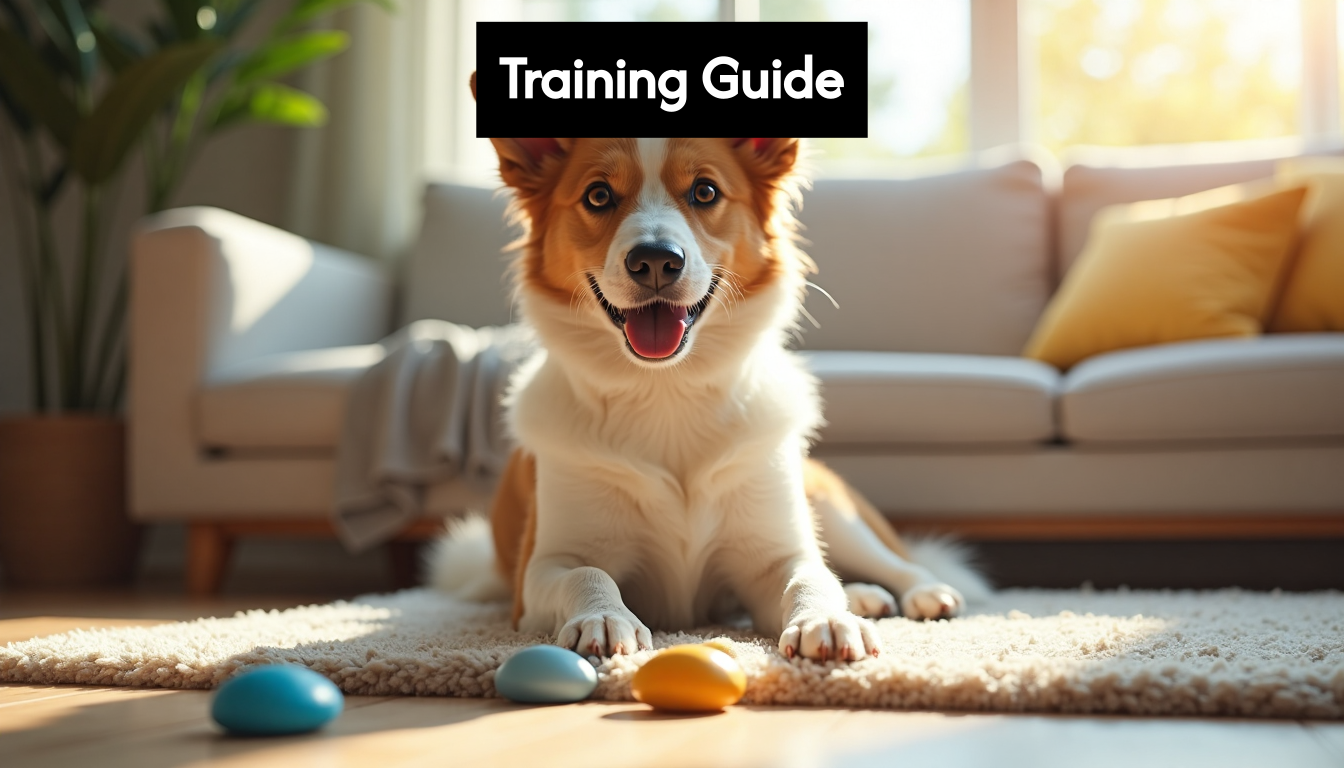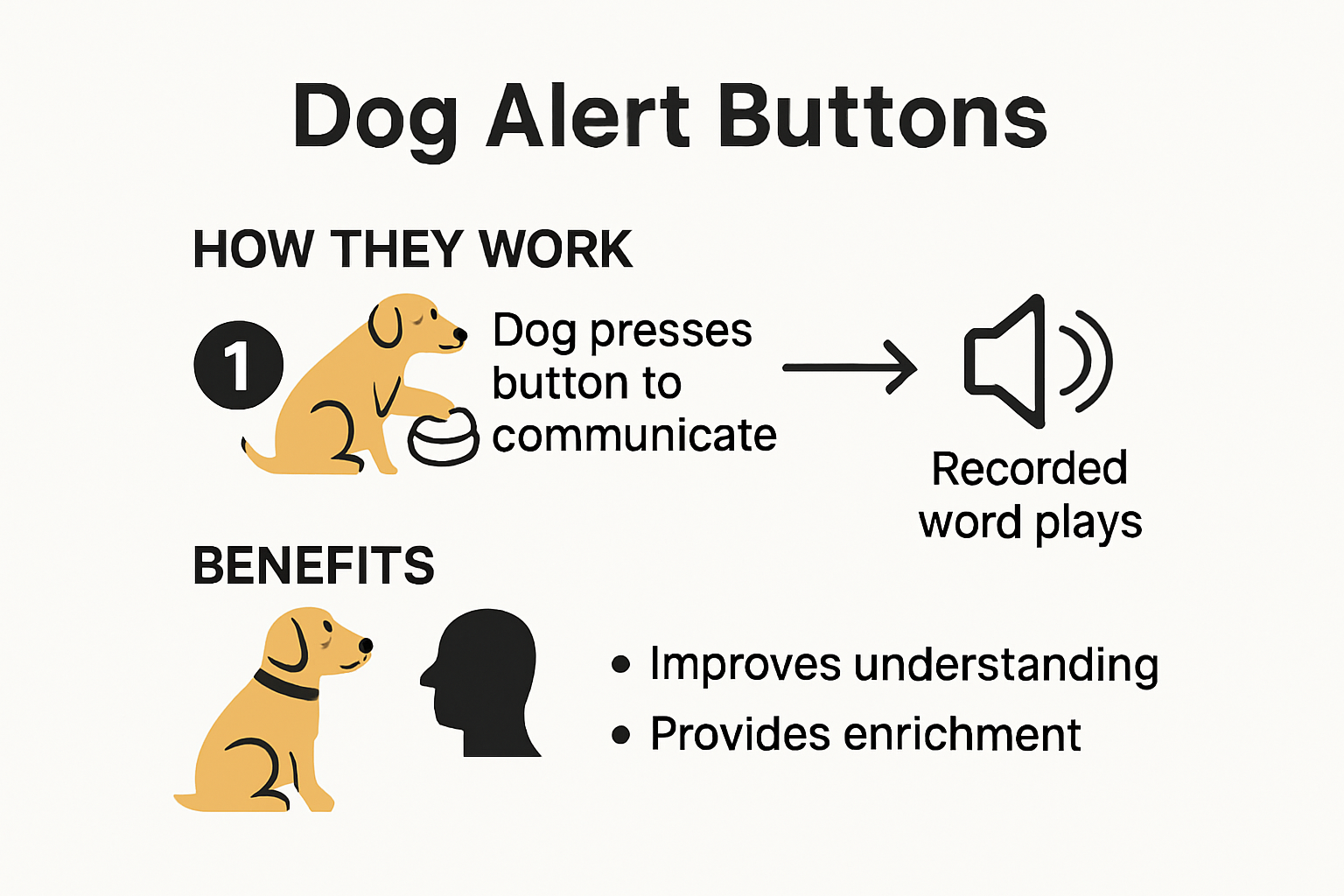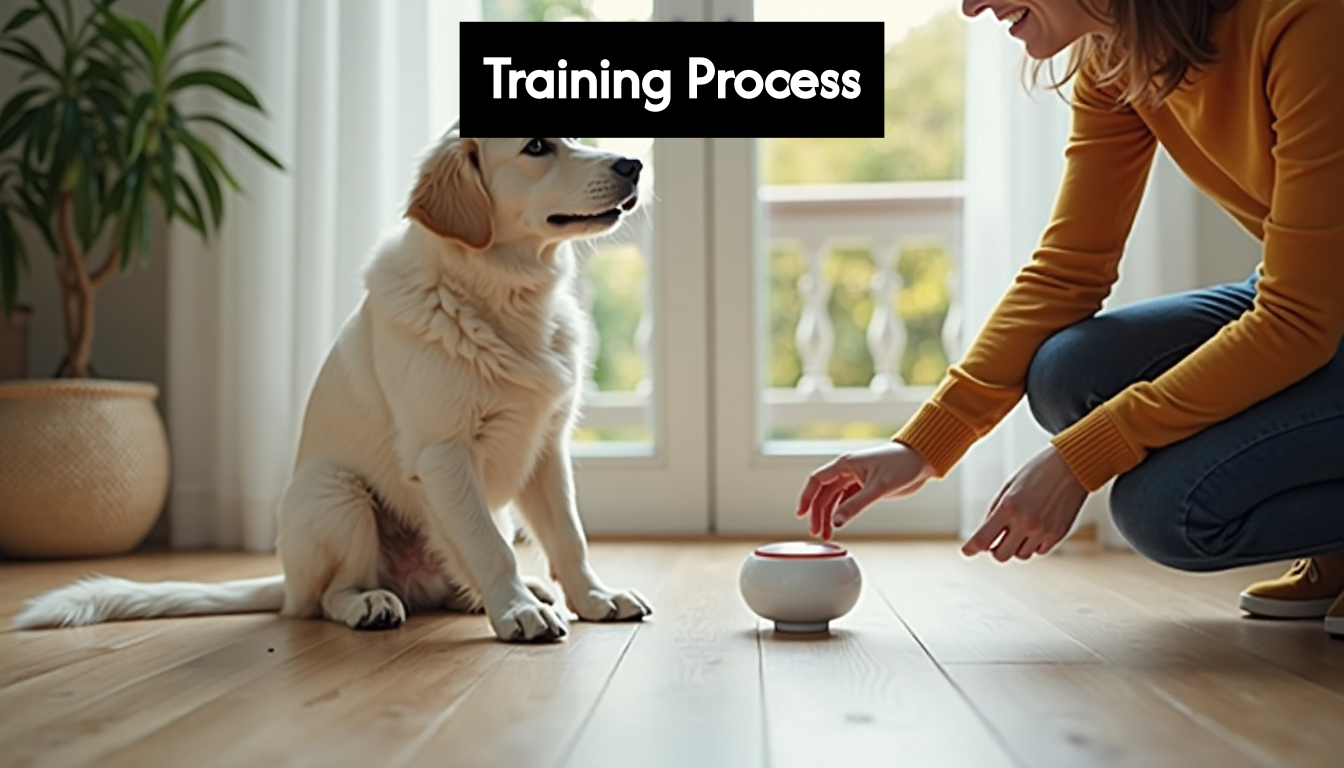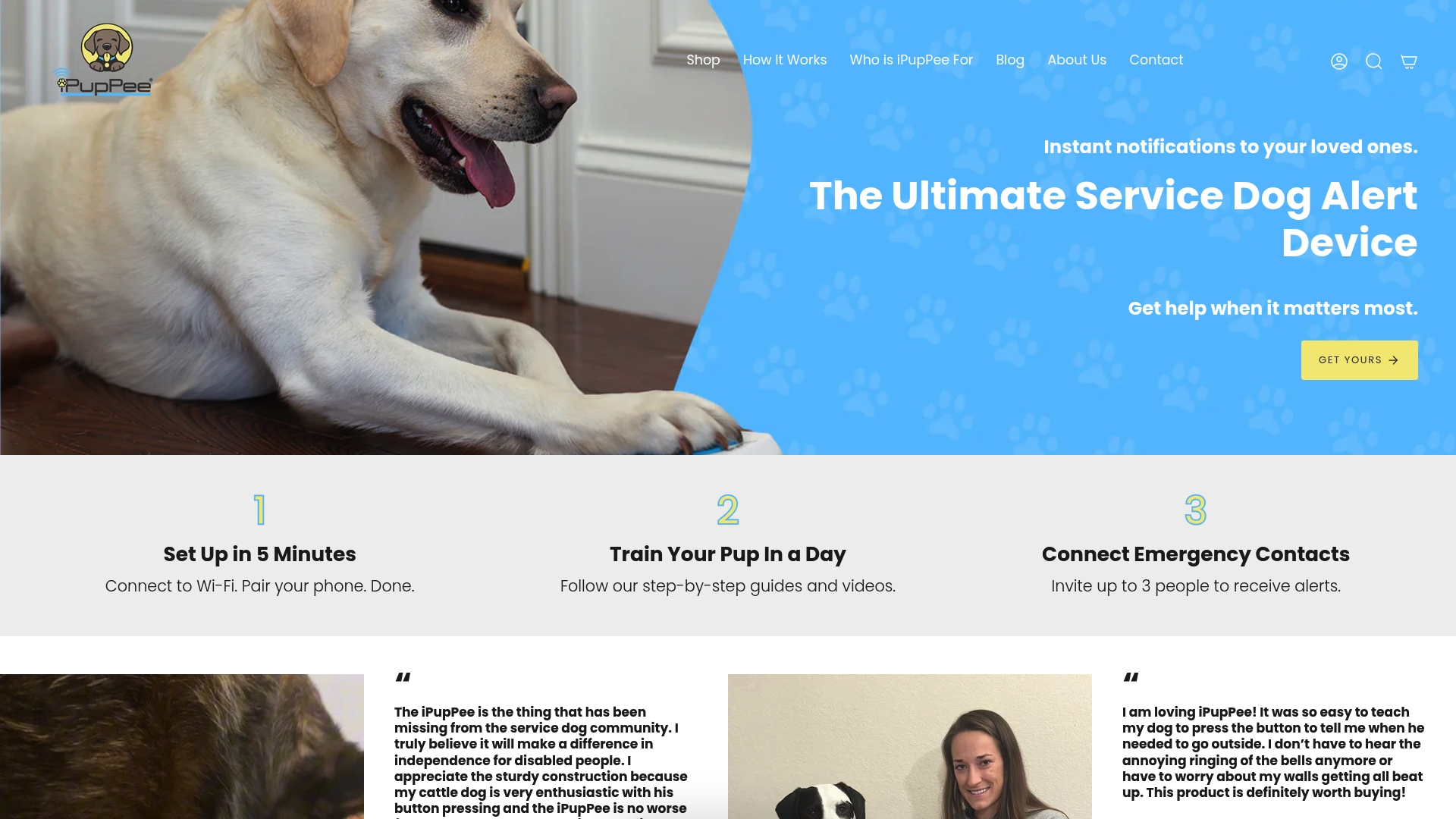
Teaching your dog to ‘talk’ with alert buttons sounds futuristic, but it’s catching on fast. Here’s the surprise: dogs can learn to use up to 10 different buttons to share their needs and feelings, completely changing the way families connect with their pets. Most people think these buttons are just for showing off clever tricks. Turns out, they are helping service dogs signal medical emergencies and giving anxious rescues a calm way to express themselves, transforming daily life for countless owners.
Table of Contents
- Understanding Dog Alert Buttons And Their Uses
- Choosing The Right Alert Button For Your Dog
- Step-By-Step Dog Alert Button Training Process
- Troubleshooting And Real-Life Applications
Quick Summary
| Takeaway | Explanation |
|---|---|
| Understanding Dog Alert Buttons | These devices enable dogs to communicate their needs by pressing buttons associated with specific words or actions, promoting better interaction between dogs and their owners. |
| Choosing the Right Button System | Selecting a button system should involve evaluating features like durability, customization, and ease of learning to suit your dog’s individual needs and communication style. |
| Establishing Training Foundations | Begin training with 3-5 simple, clear buttons linked to fundamental needs, using consistent modeling and positive reinforcement to help your dog learn associations effectively. |
| Navigating Common Challenges | Be prepared to address issues such as button confusion or lack of engagement by returning to foundational training and maintaining clear, structured environments. |
| Real-World Applications of Communication | Advanced button training can support dogs in various contexts, from service and support roles to everyday family interactions, transforming how dogs express their needs. |
Understanding Dog Alert Buttons and Their Uses
Dog alert buttons represent a revolutionary communication technology that bridges the gap between human understanding and canine needs. These innovative devices enable dogs to express themselves through strategically placed electronic buttons, transforming how pet owners comprehend and respond to their furry companions’ desires and requirements.

The Science Behind Communication Buttons
Communication buttons function on a sophisticated learning principle rooted in associative behavioral psychology. Dogs learn to press specific buttons linked to particular words or actions, creating a structured communication system. Learn more about our comprehensive button training approach that helps owners effectively teach their dogs this unique language.
The core mechanism involves consistent modeling and positive reinforcement. Owners demonstrate button usage by pressing specific buttons during corresponding activities. For instance, pressing the “outside” button before taking the dog out for a walk helps the animal gradually associate the button press with the action. Over time, dogs begin to understand that pressing a button communicates a specific desire or need.
Research from Canine Communication Studies suggests that dogs can learn to use between 3-10 buttons effectively, depending on their individual cognitive abilities and training consistency. This range allows for basic communication about fundamental needs like hunger, bathroom breaks, play, and comfort.
Practical Applications for Different Dog Owners
Alert buttons serve diverse populations with unique communication requirements. Service dog handlers can use these buttons to enhance their dogs’ ability to signal specific needs or potential medical events. Seniors living alone might benefit from dogs who can communicate when they require assistance or when something seems amiss in their environment.
For families with special needs children or individuals with disabilities, these communication buttons offer an additional layer of interaction and support. A dog can press buttons to indicate potential dangers, signal the need for medication, or communicate specific assistance requirements.
Rescue dogs and those with previous traumatic experiences might find communication buttons particularly helpful. These devices provide a structured, low-stress method of expressing themselves, potentially reducing anxiety and improving human-animal bonding. By offering a clear, predictable communication method, alert buttons help dogs feel more understood and secure in their environments.
While exciting, successful dog alert button training requires patience, consistency, and a genuine commitment to understanding your dog’s unique communication style. Not all dogs will learn at the same pace, and individual cognitive differences mean some might master button communication more quickly than others. The key is maintaining a positive, encouraging training approach that celebrates small victories and respects each dog’s learning curve.
As technology continues advancing, dog alert buttons represent more than just a training tool. They symbolize a profound shift in how we perceive animal communication, offering glimpses into the rich emotional and cognitive landscapes of our canine companions.
Choosing the Right Alert Button for Your Dog
Selecting the ideal alert button system requires careful consideration of multiple factors that go beyond simple functionality. The right communication device can transform how you interact with your dog, making it critical to evaluate options that match your specific needs and your dog’s learning capabilities.
Understanding Button System Features
Modern dog alert button technologies in 2025 offer sophisticated features designed to enhance communication and safety. Explore our comprehensive button training resources to understand the nuanced approach to selecting the right system. Key considerations include button durability, customization options, and ease of learning for different dog personalities.
Experts from Canine Communication Research recommend prioritizing systems with clear visual identifiers and nonslip organizational tiles. These features help dogs more easily associate specific buttons with corresponding actions or needs. The ideal system should offer:
- Customization (individual button programming)
- Durability (resistant to dog paws and potential rough handling)
- Intuitive Layout (clear spacing and distinct button designs)
Veterinary behaviorists emphasize that not all dogs learn at the same pace. Some dogs might quickly grasp button communication, while others require more extended training periods. This variability means selecting a system flexible enough to accommodate different learning styles is crucial.
Matching Buttons to Your Dog’s Specific Needs
The alert button selection process should be tailored to your dog’s unique circumstances. Service dog handlers, for instance, require more complex communication systems compared to pet owners seeking basic need communication. A dog with medical alert requirements will need buttons that can convey more nuanced information about potential health events.
Factors to consider include your dog’s age, previous training experience, cognitive abilities, and specific communication goals. Older dogs might need larger, more accessible buttons, while younger dogs could benefit from more interactive and dynamic systems. Rescue dogs with traumatic backgrounds might require gentler, more intuitive communication tools that do not overwhelm them.
Budget plays a significant role in selection, but it should not be the sole determining factor. Investing in a high-quality system that genuinely facilitates communication can provide long-term benefits in understanding and supporting your dog’s needs. Some advanced systems integrate additional features like GPS tracking and health monitoring, offering comprehensive support beyond simple button communication.
Ultimately, the right alert button system is a personalized tool that bridges the communication gap between humans and dogs. It requires patience, consistent training, and a willingness to adapt to your dog’s unique learning curve. By approaching button selection as a collaborative process, you create an opportunity for deeper understanding and connection with your canine companion.
Step-By-Step Dog Alert Button Training Process

Training your dog to use alert buttons requires a systematic, patient approach that transforms communication from passive interaction to an intentional dialogue. This process demands consistency, positive reinforcement, and a deep understanding of your dog’s unique learning style.
Establishing Button Foundations
Discover our comprehensive button training techniques that simplify the learning process for both dogs and owners. The initial phase focuses on creating meaningful associations between buttons and specific actions or needs. According to Canine Learning Experts, the key is selecting words with positive emotional connections.
Begin by choosing 3-5 simple, clear words that represent fundamental needs or desires. Recommended starting buttons typically include:
- Outside (bathroom needs)
- Play (recreational activities)
- Treat (food rewards)
- Cuddle (affection)
- Water (hydration)
Consistent modeling becomes crucial during this initial stage. Vocalize the word while pressing the corresponding button before performing the associated action. For example, press the “outside” button and immediately take your dog outdoors. This repetitive process helps your dog understand the button’s direct relationship to the action.
Advanced Training Techniques
As your dog becomes more comfortable with basic button communication, progression requires strategic refinement. Veterinary behaviorists recommend creating a structured environment that encourages exploration and minimizes frustration. The training process should feel like an engaging game rather than a rigid exercise.
Pay close attention to your dog’s individual learning pace and cognitive capabilities. Some dogs might grasp button communication quickly, while others require extended practice. Patience and positive reinforcement are your most powerful training tools. Reward even the smallest attempts at button interaction, using treats, praise, or additional playtime to create positive associations.
Advanced training involves gradually increasing button complexity and teaching more nuanced communication. This might include buttons representing emotional states, specific rooms in the house, or more complex requests. Professional dog trainers suggest introducing one new button every few weeks to prevent overwhelming your dog.
Technical considerations are equally important. Ensure buttons are placed at an accessible height, have consistent placement, and are durable enough to withstand repeated pressing. Some dogs might press buttons accidentally, so establishing clear communication boundaries becomes essential.
Recording your training sessions can provide valuable insights into your dog’s learning progress. Video documentation allows you to analyze button interactions, identify patterns, and adjust your training approach accordingly. This data-driven method helps create a more personalized and effective communication strategy.
Remember that alert button training is more than a technical skill. It represents a profound opportunity to deepen the bond between you and your dog, creating a communication channel that transcends traditional human-animal interactions. Each button press becomes a moment of connection, understanding, and mutual respect.
Troubleshooting and Real-Life Applications
Dog alert button training is not a linear journey. Even with careful preparation, owners will encounter challenges that require adaptability, patience, and strategic problem-solving. Understanding potential obstacles and developing effective solutions is crucial for maintaining successful communication with your canine companion.
Common Training Challenges
Explore our comprehensive troubleshooting guide to navigate the complexities of alert button communication. One of the most frequent issues owners encounter is inconsistent button usage. According to Canine Behavior Specialists, this often stems from unclear associations or insufficient reinforcement.
Typical troubleshooting scenarios include:
- Button Confusion: Dogs pressing multiple buttons randomly
- Lack of Interest: Minimal engagement with communication system
- Overexcitement: Excessive or inappropriate button pressing
- Selective Communication: Using only certain buttons
Addressing these challenges requires a nuanced approach. For instance, button confusion can be mitigated by returning to foundational training techniques. Reestablish clear associations by demonstrating button use consistently and rewarding precise communication. Veterinary behaviorists recommend creating visual distinctions between buttons and maintaining a structured, predictable training environment.
Real-World Communication Applications
Modern alert button technologies extend far beyond basic communication. Advanced training techniques enable dogs to provide critical support in various real-life scenarios. Research from Canine Assistance Technologies demonstrates the transformative potential of sophisticated communication systems.
Service dogs and support animals benefit dramatically from advanced button training. These communication tools allow dogs to signal specific medical needs, potential health emergencies, or environmental challenges. For individuals with disabilities, this technology represents more than convenience. It becomes a lifeline of communication and independence.
Parents of children with special needs find particular value in alert button systems. Dogs can communicate a child’s specific requirements, potential sensory overloads, or necessary interventions. Rescue dogs with traumatic backgrounds often show remarkable progress in using buttons as a low-stress communication method, helping them feel more secure and understood.
Real-life applications extend to everyday scenarios. Busy families can use alert buttons to understand their dog’s needs more precisely. A button for “Walk” or “Play” helps reduce guesswork and creates more intentional interactions. Senior dog owners benefit from systems that allow their aging companions to communicate health concerns or discomfort more effectively.
Technology integration continues to expand communication possibilities. Some advanced systems now incorporate GPS tracking, health monitoring, and machine learning algorithms that help interpret dogs’ communication patterns. These innovations transform alert buttons from simple communication tools into comprehensive support systems.
Ultimately, troubleshooting and applying alert button technology is about building a deeper, more meaningful relationship with your dog. Each challenge overcome represents an opportunity to understand your companion more profoundly. Patience, consistency, and a willingness to adapt are the most critical tools in creating a successful communication strategy.
Frequently Asked Questions
What are dog alert buttons and how do they work?
Dog alert buttons are electronic devices that allow dogs to communicate their needs by pressing buttons associated with specific words or actions. They work through associative learning, where dogs learn to press buttons to convey desires such as hunger, play, or bathroom needs.
How many buttons can a dog learn to use effectively?
Research suggests that dogs can learn to use between 3 to 10 buttons effectively, depending on their individual cognitive abilities and the consistency of training methods used.
What are the basic steps to train a dog to use alert buttons?
To train a dog to use alert buttons, begin by choosing 3-5 simple words associated with fundamental needs (such as ‘outside’ or ‘play’). Consistently model the button usage, and use positive reinforcement to help the dog associate the button press with the desired action over time.
What should I do if my dog is confused by the alert buttons?
If your dog experiences button confusion, return to foundational training techniques. Reinforce clear associations between buttons and actions, and maintain a structured training environment to minimize distractions and enhance understanding.
Unlock a New Way to Understand Your Dog
Struggling to help your dog communicate real needs instead of guessing at barks or whines? If training with alert buttons feels overwhelming or if your dog needs a trusted way to let you know about bathroom breaks, playtime, or even emergencies, you are not alone. Many owners share this worry—especially those with service dogs, rescue pups, or family members who rely on added safety and support. The “Dog Alert Button Training Guide 2025” shows how breakthrough communication can change daily life for both you and your dog. Now, you can take the next step and bring this confidence home with iPupPee.

Experience peace of mind using a specialized dog communication device designed for easy training, safety, and independence. Whether you need clear training instructions or want to explore stories from real families, ipuppee.com gives you every tool to start today. Give your dog a voice and make every need clear—visit ipuppee.com now and start your transformation in minutes.

